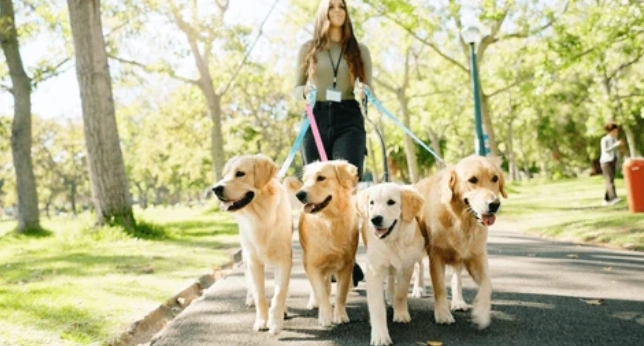Dogs, known as “man’s best friend,” have shared a deep bond with humans for thousands of years.. They offer protection, emotional support, and unconditional love. While owning a dog can be rewarding, it’s essential to understand their needs — such as breed, diet, health, training, and grooming. This guide will help you provide the best care for your dog and ensure they live a happy, healthy life.
Dogs, scientifically known as Canis familiaris or Canis lupus familiaris, are domesticated descendants of the gray wolf. They were first domesticated over 14,000 years ago by hunter-gatherers, making them the first animal species to be domesticated by humans, long before agriculture developed.
Through this close relationship with humans, dogs have adapted to thrive on a diet that includes starches, which would not be suitable for other wild canids, such as wolves.
Dogs come in a wide variety of breeds, which differ in shape, size, color, and behavior. Despite these differences, dogs share common physical features like powerful jaws with 42 teeth, a similar bone structure to wolves (except for the tail), and keen senses. Dogs have an incredible sense of smell and hearing, which are far superior to humans, though their eyesight is not as sharp.
Dogs serve a variety of roles in human society. They assist in hunting, herding, pulling loads, providing protection, and even offering companionship and therapy. Additionally, dogs support people with disabilities and help law enforcement and military personnel in various ways.
Dogs communicate through different means, including body language, facial expressions, vocalizations, and scents. They also mark their territories by urinating, which is more likely when entering unfamiliar environments. Over time, dogs have adapted to human behavior, making them unique in their ability to understand and communicate with us.
Approximately 700 million to 1 billion dogs are estimated to be living around the globe. Dogs are the most popular pet in the United States, found in 34-40% of households. While developed countries account for about 20% of the global dog population, approximately 75% of dogs live in developing countries. These dogs are often feral or part of local communities
Understanding Dog Breeds
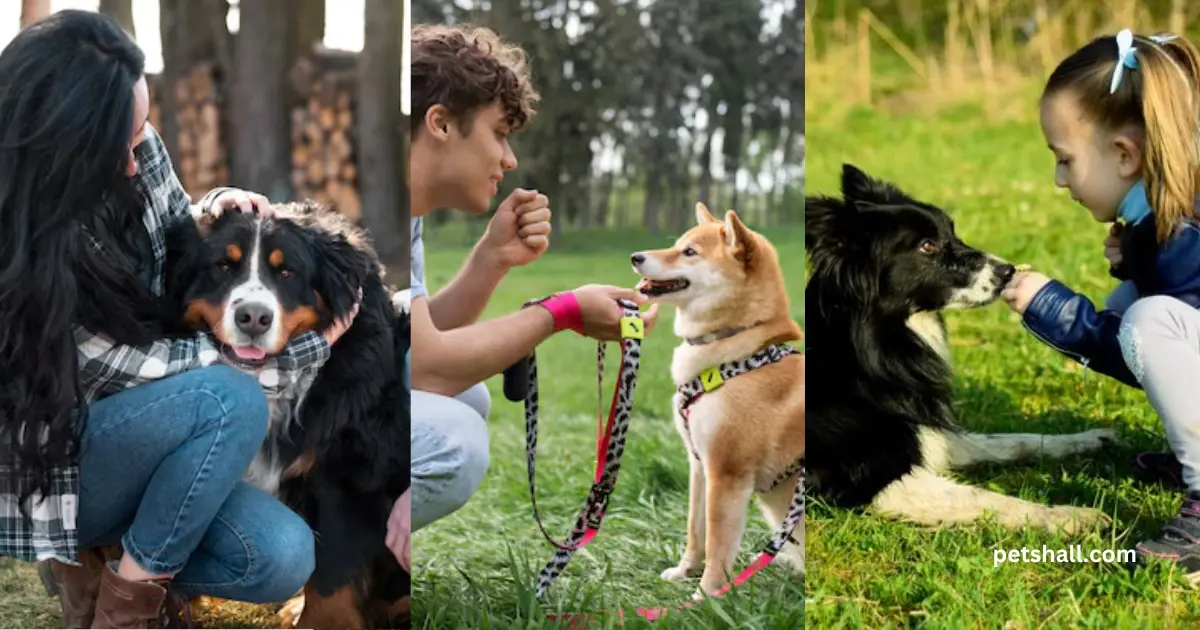
Choosing the right dog breed is crucial as it directly affects your pet’s behavior, energy levels, and health. There are hundreds of dog breeds, each with unique characteristics and care requirements. For instance, Labrador Retrievers are friendly and social, making them perfect for families. On the other hand, German Shepherds are highly intelligent and protective, excelling as working dogs. Small breeds like Chihuahuas are ideal for apartment living, while larger breeds like Great Danes need more space.
It’s also essential to consider your lifestyle when selecting a breed. Active families might prefer a high-energy dog like a Border Collie, while someone with a quieter lifestyle may lean towards a calmer breed like a Bulldog. Each breed has specific needs, so understanding those can help you provide the best care for your dog.
Complete List of Dog Breeds from A to Z :
| Letter | Dog Breeds | |
| A | Akita, Australian Shepherd, Alaskan Malamute, Affenpinscher, American Bulldog | |
| B | Beagle, Border Collie, Boxer, Bulldog, Basset Hound | |
| C | Chihuahua, Cocker Spaniel, Collie, Corgi, Chinese Shar-Pei | |
| D | Dalmatian, Doberman Pinscher, Dachshund, Dogo Argentino, Deutscher Schäferhund (German Shepherd) | |
| E | English Bulldog, Eskimo Dog, English Setter, Elkhound | |
| F | French Bulldog, Fox Terrier, Flat-Coated Retriever | |
| G | Golden Retriever, Great Dane, German Shepherd, Greyhound, Great Pyrenees | |
| H | Husky, Hound, Havanese, Hungarian Vizsla | |
| I | Irish Setter, Irish Wolfhound, Italian Greyhound | |
| J | Jack Russell Terrier, Japanese Chin, Japanese Spitz | |
| K | King Charles Spaniel, Keeshond, Komondor | |
| L | Labrador Retriever, Lhasa Apso, Leonberger, Lowchen | |
| M | Maltese, Mastiff, Miniature Schnauzer, Miniature Pinscher | |
| N | Newfoundland, Norfolk Terrier, Neapolitan Mastiff | |
| O | Old English Sheepdog, Otterhound | |
| P | Poodle, Pug, Pembroke Welsh Corgi, Papillon, Pit Bull | |
| Q | (No widely recognized breeds starting with Q) | |
| R | Rottweiler, Rhodesian Ridgeback, Russian Terrier, Rough Collie | |
| S | Shih Tzu, Samoyed, Siberian Husky, Springer Spaniel, Saint Bernard | |
| T | Terrier, Toy Poodle, Tibetan Mastiff, Doberman Pinscher | |
| U | (No widely recognized breeds starting with U) | |
| V | Vizsla, Belgian Malinois, Vallhund | |
| W | Weimaraner, West Highland Terrier, Whippet, Welsh Corgi | |
| X | (No widely recognized breeds starting with X) | |
| Y | Yorkshire Terrier, Yakutian Laika | |
| Z | Zuchon, Zerdava |
Feeding Your Dog: Choosing the Right Food
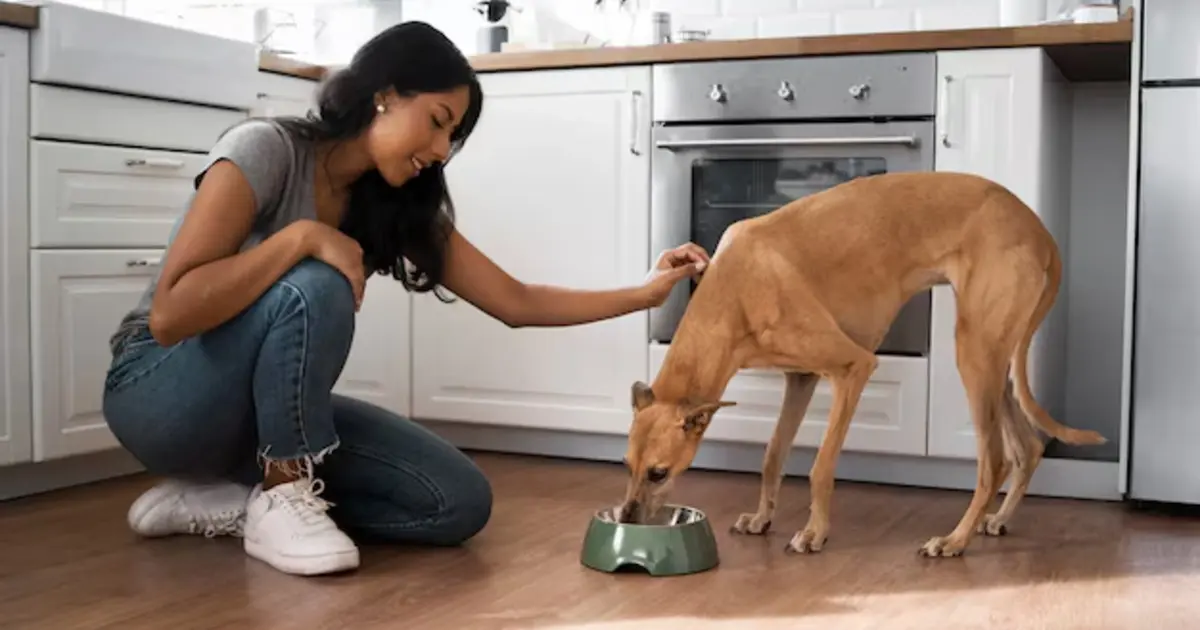
A balanced diet is crucial for your dog’s health and well-being. Dogs, like humans, need a variety of nutrients, including proteins, fats, carbohydrates, vitamins, and minerals. When choosing dog food, you have several options, such as dry kibble, wet food, and raw diets. Dry kibble is convenient and helps maintain dental health, while wet food is often more appetizing and hydrating. However, it’s important to choose a food that suits your dog’s age, size, and health needs.
Puppies require high-protein foods to support their growth, while adult dogs need a balanced diet to maintain energy levels and weight. Senior dogs may need special food with joint support and fewer calories to avoid obesity. Always consult with your vet to choose the best food for your dog’s age and breed.
It’s also essential to avoid feeding your dog human food, especially chocolate, grapes, and onions, as these can be toxic to dogs. Always ensure that your dog’s food is safe and appropriate for their dietary needs.
Maintaining Your Dog’s Health
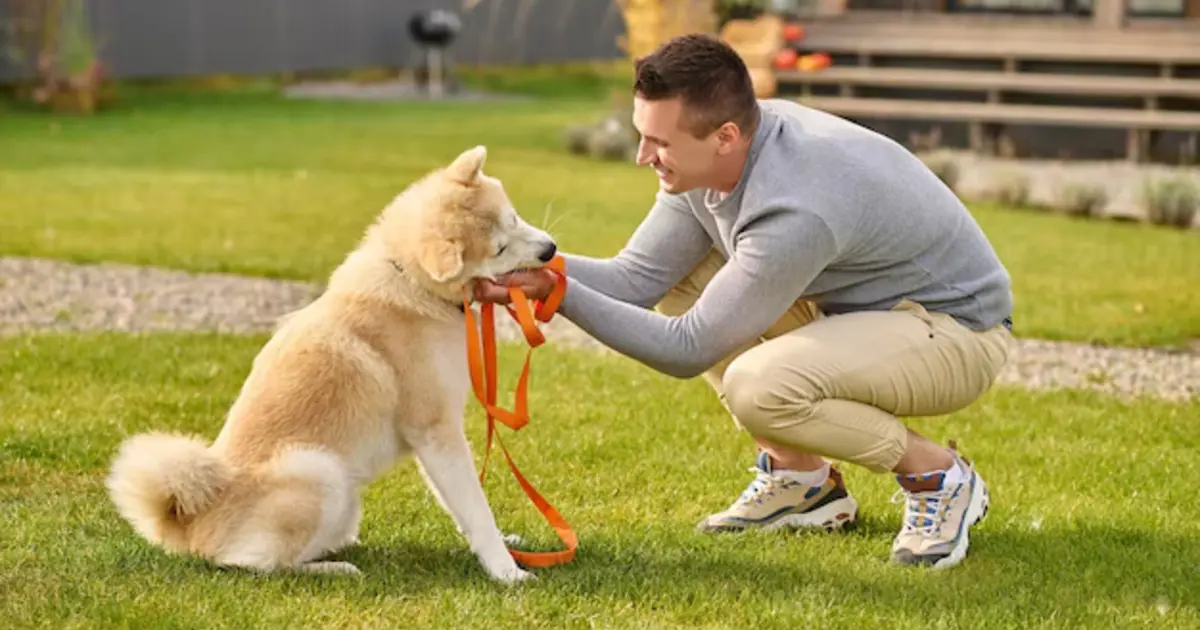
Keeping your dog healthy goes beyond feeding them the right food. Regular veterinary check-ups are essential to detect and prevent any health issues. Common health problems in dogs include obesity, ear infections, and dental problems. Obesity is a growing concern, leading to joint problems, diabetes, and heart disease. Ensuring your dog maintains a healthy weight through proper diet and regular exercise is key to their longevity.
Dental health is also a critical aspect of your dog’s overall health. Many dogs suffer from dental issues like plaque and tartar build-up, which can lead to gum disease and tooth loss. Brushing your dog’s teeth regularly and providing dental chews can help prevent these problems.
Regular vaccinations are crucial to protect your dog from common diseases such as rabies, parvovirus, and distemper. Routine check-ups can help catch health issues early, allowing for more effective treatment.
Training and Behavior: Building a Strong Bond
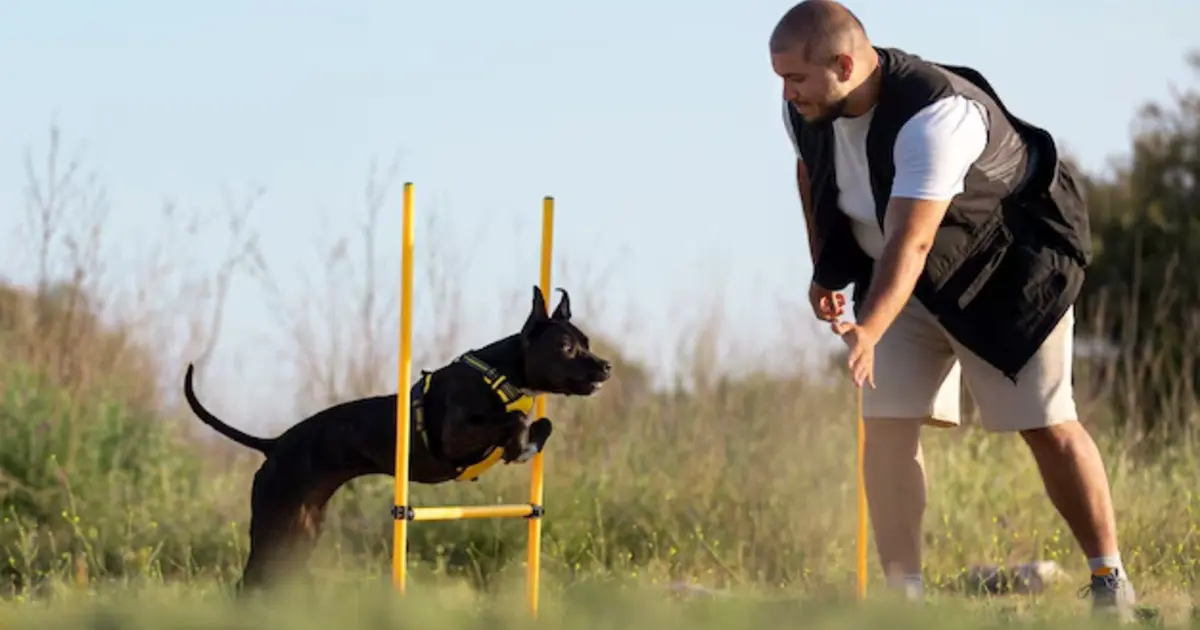
Training your dog is essential to ensure they are well-behaved and responsive to commands. Basic commands like “sit,” “stay,” “come,” and “leave it” are essential for both your dog’s safety and your peace of mind. Training also provides mental stimulation, which is vital for your dog’s well-being.
Socializing your dog is equally important, especially in the early stages of their life. Exposing your dog to different people, animals, and environments helps them become well-adjusted and less fearful. Socialization can prevent behavioral issues such as aggression and anxiety later in life.
If your dog shows signs of behavioral problems, such as excessive barking, chewing, or separation anxiety, it’s essential to address these issues early. Positive reinforcement training and consistency are key to overcoming these challenges. In some cases, consulting a professional dog trainer may be beneficial.
Grooming: Keeping Your Dog Clean and Comfortable

Grooming your dog regularly is essential to keep them looking good and feeling comfortable. Depending on the breed, your dog may need regular brushing to prevent matting and reduce shedding. Long-haired breeds like Shih Tzus or Collies require more frequent grooming compared to short-haired dogs like Beagles.
Bathing your dog is necessary, but you don’t want to overdo it, as frequent baths can dry out their skin. Use a dog-specific shampoo to keep their coat healthy and shiny. Additionally, trimming your dog’s nails regularly is crucial to prevent discomfort or injury. Dogs with floppy ears, such as Cocker Spaniels, should have their ears cleaned regularly to prevent infections.
It’s also important to keep an eye on your dog’s teeth and eyes. Regular brushing and providing dental chews can help prevent oral diseases, while wiping their eyes with a soft cloth can prevent tear stains.
Adopting a Dog: Giving a Shelter Dog a Forever Home

Adopting a dog from a shelter is a wonderful way to give a dog a second chance at life. Many dogs in shelters are already trained and socialized, making them perfect companions for families. When adopting, it’s important to consider your living situation, lifestyle, and the dog’s needs. Some dogs may require more attention or special care, while others are more independent.
Adoption offers numerous benefits, including saving a life and helping to reduce the number of homeless animals. It also creates a special bond between you and your dog, as you provide them with the love and care they deserve.
Before adopting, make sure to meet the dog first and spend some time getting to know them. It’s important to ensure they are a good fit for your family and lifestyle.
Dogs: Man’s Best Friend and Their Evolution
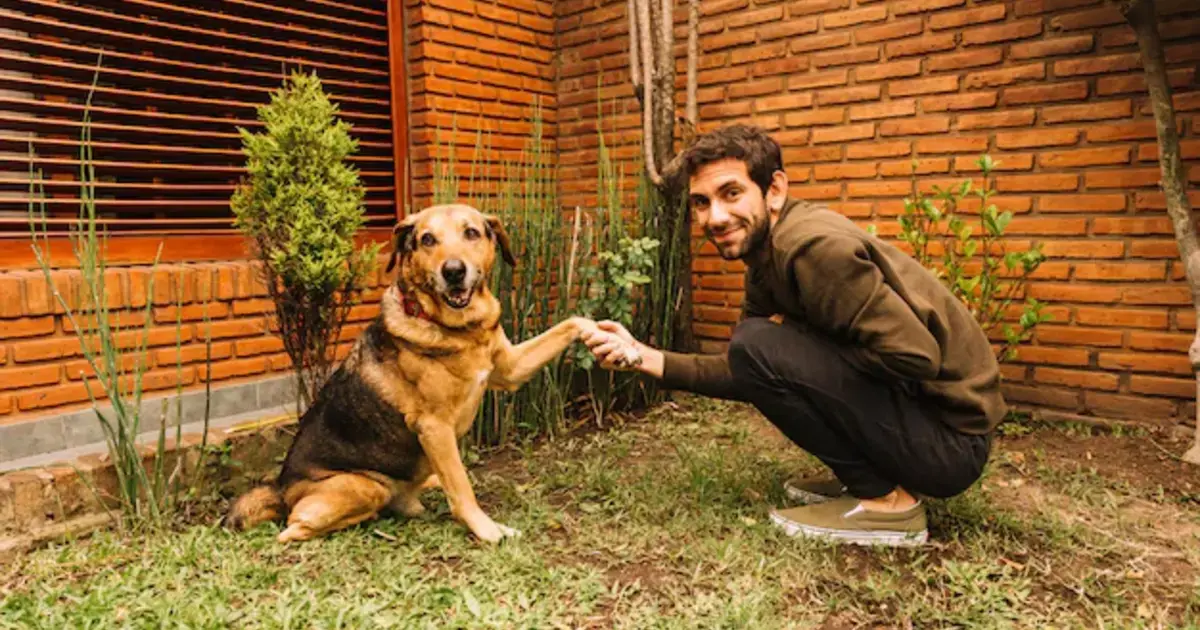
Dogs have earned the title of “man’s best friend” due to their long history of companionship, loyalty, and service to humans. But their story begins far before they became our trusted companions. The domestication of dogs dates back over 14,000 years when ancient hunter-gatherers first began selectively breeding wolves for specific traits. Over time, these wolves evolved into the domestic dogs we know today, with unique behavioral and physical characteristics that made them perfect partners for humans.
Through selective breeding, dogs were adapted for various roles, from hunting and herding to providing protection and companionship. Their ability to bond with humans has been a result of thousands of years of co-evolution, where dogs learned to understand human emotions and communicate in ways that other animals cannot.
Dogs’ evolutionary journey is marked by their ability to adapt to a wide range of environments and roles, from working animals to family pets. Today, there are over 340 recognized dog breeds worldwide, each with unique traits and temperaments. Despite these differences, all dogs share a common ancestry and are considered the closest animal relatives to the gray wolf, from which they descended.
The relationship between dogs and humans has continued to grow and deepen over the centuries, with dogs now playing vital roles in society as service animals, therapy dogs, search-and-rescue workers, and loyal pets. This enduring bond is a testament to how far dogs have come from their wild ancestors, earning them the title of “man’s best friend.”
Conclusion
Owning a dog is a lifelong commitment that requires understanding their unique needs. From choosing the right breed and feeding them properly to maintaining their health and training them for good behavior, there are many aspects to consider. With proper care, your dog will not only thrive but also become a loyal and loving companion for many years. Whether you’re adopting a dog or raising one from a puppy, this guide provides the essential information you need to ensure your dog’s happiness and well-being.
Frequently Asked Questions About Dogs
- 1. What is the best dog breed for a family?
- The best breed for a family depends on your lifestyle, home size, and activity level. Some popular family-friendly breeds include:
- Labrador Retriever
- Golden Retriever
- Beagle
- Bulldog
- Boxer
These breeds are typically known for being affectionate, good with children, and easy to train.
- 2. How much exercise does a dog need?
- Dogs need regular exercise to stay healthy and happy. The amount of exercise varies depending on the breed, age, and health of the dog. Most dogs require at least 30 minutes to 1 hour of exercise each day. Active breeds, like Border Collies and Labrador Retrievers, may need more, while smaller or less energetic breeds may require less.
- 3. How can I train my dog to stop barking excessively?
- Excessive barking can be managed with training and consistency. Some techniques include:
- Positive reinforcement: Reward your dog when they stop barking on command.
- Distraction: Redirect their attention to a toy or another activity when they start barking.
- Command training: Teach them commands like “quiet” or “enough.”
- Consistency: Be patient and consistent with your training.
- 4. What should I feed my dog?
- Dogs need a balanced diet that includes high-quality proteins, fats, carbohydrates, vitamins, and minerals. You can choose from various food options:
- Dry kibble
- Wet food
- Raw food (BARF diet)
The food should be appropriate for your dog’s age, size, and breed. Consult with your vet to ensure your dog is getting the right nutrition.
- 5. How do I know if my dog is sick?
- Signs that your dog may be ill include:
- Loss of appetite or difficulty eating
- Lethargy or excessive sleeping
- Vomiting or diarrhea
- Coughing, sneezing, or difficulty breathing
- Excessive thirst or urination
If you notice any of these signs, it’s important to take your dog to the vet for a check-up.
- 6. How often should I groom my dog?
- The frequency of grooming depends on the dog’s breed and coat type. Long-haired breeds like Shih Tzus or Collies may need grooming every few days to prevent matting, while short-haired breeds like Beagles or Boxers might only need grooming once a week. Bathing should generally be done every 4-6 weeks unless your dog gets dirty or smelly in between.
- 7. Can I adopt a dog if I live in an apartment?
- Yes, many dogs are suitable for apartment living, especially smaller or less energetic breeds. Some dog breeds that do well in apartments include:
- French Bulldog
- Chihuahua
- Pug
- Cavalier King Charles Spaniel
It’s essential to ensure that the dog gets enough exercise and mental stimulation even in a smaller space.
